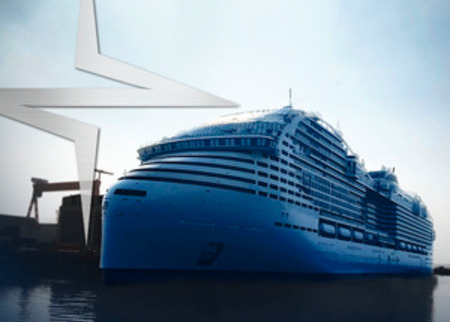In the final assembly of cruise ships, the deck is welded using either the SAW process or the manual FCAW process. With the SAW process, the challenge is that heavy equipment is correspondingly difficult to bring on board; with the manual FCAW process, one is limited to a welding speed of 20 to 30 cm per minute.
Implementation of diamondspark 52 MC for both manual & saw welding aboard cruise ships

Chantiers de l'Atlantique, France is a shipyard on the Atlantic coast of France where the largest cruise ships in the world are built. Thanks to voestalpine Böhler Welding France, an outstanding technical solution was presented to the customer with the introduction of “diamondspark 52 MC”. Within the framework of the Solvator Awards, this success won bronze in the Exceptional Technical Solution category.
Exceptional Technical Solution
To make the process more efficient, the requirements of the customer Chantiers de l’Atlantique were not only to increase the welding speed, but also to improve the bead pattern. As David Lecointre, voestalpine Böhler Welding France, points out, the aesthetics of the weld play an overriding role on the deck of a cruise ship: after all, it is constantly visible to the passengers on board. Incidentally, the length of the decks of these cruise ships is between 16 and 20 metres, and the base material is 12 to 23 mm deep.
Chantiers de l’Atlantique had to develop and adapt an FCAW trolley that allows welding with the SAW process using a Ø1.2 mm cored wire and standard MIG/MAG equipment already on board, with the addition of a flux distribution system and a flux recycling unit on the trolley.
Gold Solvator Award for the introduction of the diamondspark 52 MC for manual welding and SAW welding (with flux UV 306) on board cruise ships
The customer now benefits from the fact that the welding technician can work three times faster than before: this means that a length of 60 metres can be welded per day - instead of 20 metres before the optimisation process.
The welding speed could thus be increased from 30 to 50 cm per minute. Furthermore, fewer welds are necessary and the weld seam has a flatter appearance, which is enormously important for the aesthetics on deck. It can be assumed that far less repair work is required, and the work has also become much more comfortable for the welder: He has the option of using the same welder and torch for repair and tack welding, if necessary.